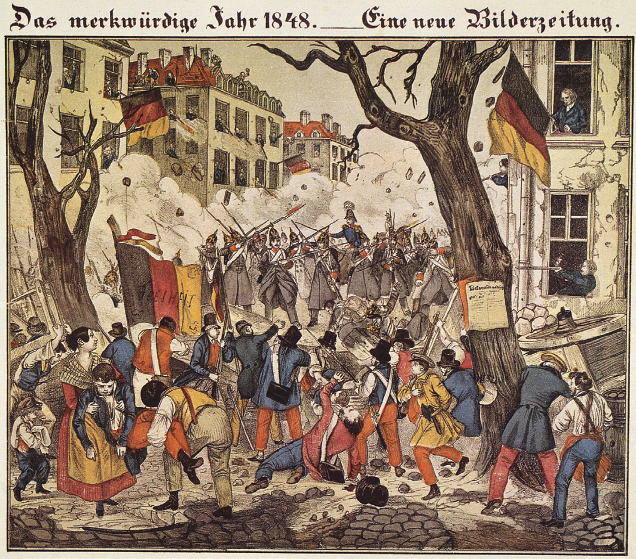Understanding World Societies:
Printed Page 718
> Why did revolutions triumph briefly throughout most of Europe in 1848, and why did they fail?

Street Fighting in Berlin, 1848
This contemporary lithograph portrays a street battle on March 18, 1848, between Prussian troops loyal to King Frederick William IV and civilian men and women demonstrators. The king withdrew his troops the following day rather than kill anymore of his “beloved Berliners.” Revolutionaries across Europe often dug up paving stones and used them as weapons. The tricolor flag achieved prominence during the revolution as the symbol of a united and democratic Germany. (akg-images)
This contemporary lithograph portrays a street battle on March 18, 1848, between Prussian troops loyal to King Frederick William IV and civilian men and women demonstrators. The king withdrew his troops the following day rather than kill anymore of his “beloved Berliners.” Revolutionaries across Europe often dug up paving stones and used them as weapons. The tricolor flag achieved prominence during the revolution as the symbol of a united and democratic Germany. (akg-
AAS LIBERAL, NATIONALIST, AND SOCIALIST FORCES battered the conservatism of 1815, social and economic conditions continued to deteriorate for many Europeans, adding to the mounting pressures. In some countries, such as Great Britain, change occurred gradually and largely peacefully, but in 1848 radical political and social ideologies combined with economic crisis to produce revolutionary movements that demanded an end to repressive government.